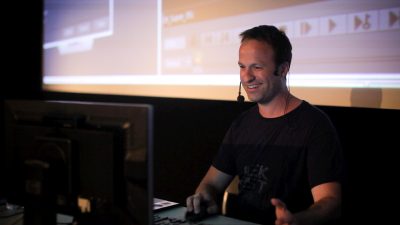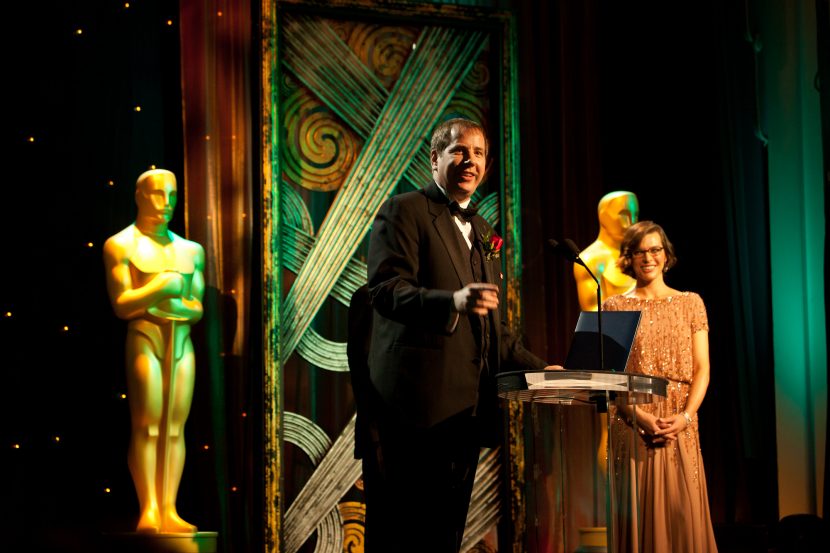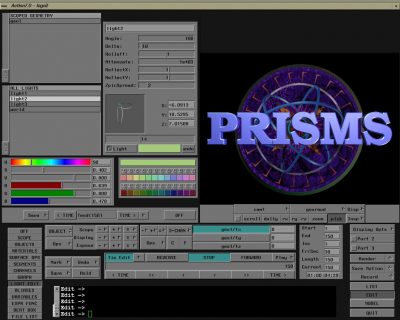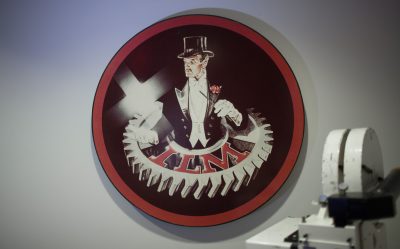The Academy of Motion Picture Arts and Sciences announced today that 10 scientific and technical achievements represented by 34 individual award recipients, as well as one organization, will be honored at its annual Scientific and Technical Awards Presentation on Saturday, February 10, at the Beverly Wilshire in Beverly Hills.
In addition, visual effects technologist Jonathan Erland will receive the Gordon E. Sawyer Award (an Oscar® statuette) for technological contributions that have brought credit to the industry (see below).
“This year we are happy to honor a very international group of technologists for their innovative and outstanding accomplishments,” said Ray Feeney, Academy Award® recipient and chair of the Scientific and Technical Awards Committee. “These individuals have significantly contributed to the ongoing evolution of motion pictures, and their efforts continue to empower the creativity of our industry.”
Unlike other main televised Academy Awards, achievements receiving Scientific and Technical Awards need not have been developed and introduced during 2017. Rather, the achievements must demonstrate a proven record of contributing significant value to the process of making motion pictures.
The Academy Awards for scientific and technical achievements are:
TECHNICAL ACHIEVEMENT AWARDS (ACADEMY CERTIFICATES)
To Jason Smith and Jeff White for the original design, and to Rachel Rose and Mike Jutan for the architecture and engineering, of the BlockParty procedural rigging system at Industrial Light & Magic.

BlockParty streamlines the rigging process through a comprehensive connection framework, a novel graphical user interface, and volumetric rig transfer, which has enabled ILM to build richly detailed and unique creatures while greatly improving artist productivity.
Read more about BlockParty here at fxguide and here from Siggraph 2013.
BlockParty 2 is ILM/Lucasfilm’s proprietary procedural rigging system built in Maya that allows riggers to create shareable rigs and then re-use these components. BlockParty was initially implemented for the first Narnia film at ILM, with the second incarnation developed for Noah, which greatly assisted that film’s ‘creation’ time-lapse sequence. Age of Extinction was the first ILM show that allowed artists to re-use parts, such as pistons, across robots. “It really let us do the facial rigging setup,” explained ILM lead creature TD on Age of Extinction: Jacob Buck . “It saved us a ton of time because then we can proceduralize that and be ready to rig the rest of the face up.” – from our 2014 ILM story.
To Joe Mancewicz, Matt Derksen and Hans Rijpkema for the design, architecture and implementation of the Rhythm & Hues Construction Kit rigging system.
This toolset provides a novel approach to character rigging that features topological independence, continuously editable rigs and deformation workflows with shape-preserving surface relaxation, enabling fifteen years of improvements to production efficiency and animation quality.
To Alex Powell for the design and engineering, to Jason Reisig for the interaction design, and to Martin Watt and Alex Wells for the high-performance execution engine of the Premo character animation system at DreamWorks Animation.
Premo’s speed and simplicity enable animators to pose full-resolution characters in representative shot context, significantly increasing their productivity.
To Rob Jensen for the foundational design and continued development, to Thomas Hahn for the animation toolset, and to George ElKoura, Adam Woodbury and Dirk Van Gelder for the high-performance execution engine of the Presto Animation System at Pixar Animation Studios.

Presto allows artists to work interactively in scene context with full-resolution geometric models and sophisticated rig controls, and has significantly increased the productivity of character animators at Pixar.
See more in our article here and
Also when the Pixar team presented at SIGGRAPH 2015 here
SCIENTIFIC AND ENGINEERING AWARDS (ACADEMY PLAQUES)
To John Coyle, Brad Hurndell, Vikas Sathaye and Shane Buckham for the concept, design, engineering and implementation of the Shotover K1 Camera System.T
his innovative six-axis stabilized aerial camera mount, with its enhanced ability to frame shots while looking straight down, enables greater creative freedom while allowing pilots to fly more effectively and safely.
To Jeff Lait, Mark Tucker, Cristin Barghiel and John Lynch for their contributions to the design and architecture of the Houdini visual effects and animation system.
Houdini’s dynamics framework and workflow management tools have helped it become the industry standard for bringing natural phenomena, destruction and other digital effects to the screen.
To Bill Spitzak and Jonathan Egstad for the visionary design, development and stewardship of the Nuke compositing system.
Built for production at Digital Domain, Nuke has become a ubiquitous and flexible tool used across the motion picture industry, enabling novel and sophisticated workflows at an unprecedented scale.
To Abigail Brady, Jon Wadelton and Jerry Huxtable for their significant contributions to the architecture and extensibility of the Nuke compositing system.

Expanded as a commercial product at The Foundry, Nuke is a comprehensive, versatile and stable system that has established itself as the backbone of compositing and image processing pipelines across the motion picture industry.
Read our original story when the Foundry first bought Nuke from D2 Software in 2007 here.
To Leonard Chapman for the overall concept, design and development, to Stanislav Gorbatov for the electronic system design, and to David Gasparian and Souhail Issa for the mechanical design and integration of the Hydrascope telescoping camera crane systems.
With its fully waterproof construction, the Hydrascope has greatly advanced crane technology and versatility by enabling precise long-travel multi-axis camera movement in, out of and through fresh or saltwater.
ACADEMY AWARD OF MERIT (OSCAR STATUETTE)

To Mark Elendt and Side Effects Software for the creation and development of the Houdini visual effects and animation system.
Side Effects’ staff were previously honored at the 2012 Sci-Tech Oscars. Andrew Clinton and Mark Elendt, were awarded for their invention and integration of micro-voxels in the Mantra renderer. This work allowed, for the first time, efficient rendering of volumetric effects such as smoke and clouds in a micro-polygon imaging pipeline. (Image above).

With more than twenty years of continual innovation, Houdini has delivered the power of procedural methods to visual effects artists, making it the industry standard for bringing natural phenomena, destruction and other digital effects to the screen.
Read the history of Houdini here at fxguide.
GORDON E. SAWYER AWARD (OSCAR STATUETTE)
Jonathan Erland
Presented to an individual in the motion picture industry whose technological contributions have brought credit to the industry.
Jonathan Erland began his career studying theater at the Central School in England and film at the London Film School.
In one of Erland’s earliest jobs, he was part of the team building the audio-animatronic puppet theaters for the I.B.M. Pavilion at the 1964 New York World’s Fair. After moving to Los Angeles, Erland maintained dual careers in both the entertainment and the industrial exhibit design fields.

He joined the newly created Industrial Light & Magic to work on the visual effects for 1977’s Star Wars. He continued in the visual effects field as director of research and development for Apogee Productions, where he received patents for a reverse bluescreen traveling matte process, the Blue-Max flux projector and a method for making front projection screens.
The innovations, along with the development of a digital traveling matte system, also earned Academy Scientific and Technical Awards.In 2007.
Erland received an Award of Commendation for “his leadership and efforts toward identifying and solving the problem of High-Speed Emulsion Stress Syndrome in motion picture film stock.”An Academy member since 1984, Erland was instrumental in establishing visual effects as a separate Academy branch in 1995.
He has served 11 years on the Academy’s board of governors and many years on the executive committees of both the visual effects branch and the Scientific and Technical Awards. He also is a founding member of the Academy’s Science and Technology Council. (Hollywood Reporter)
